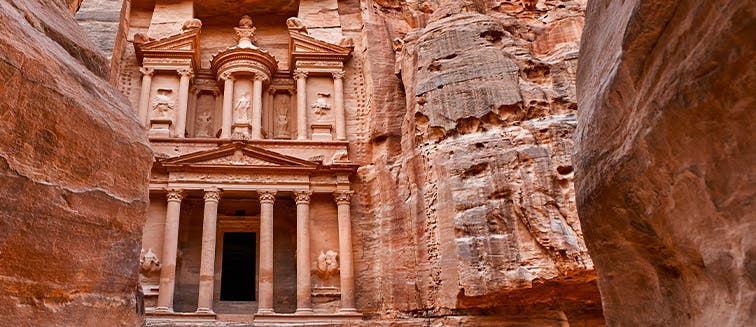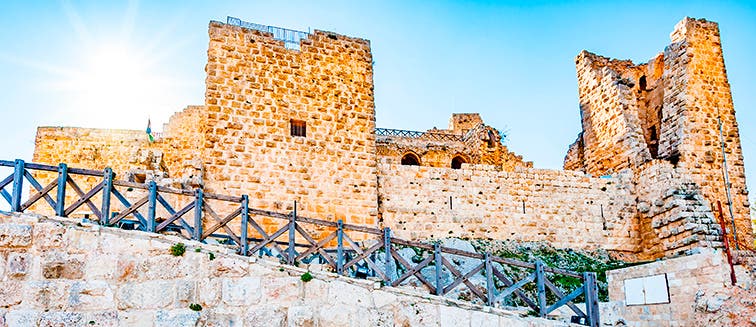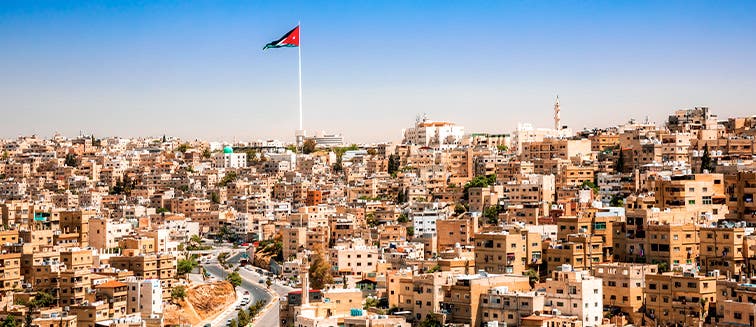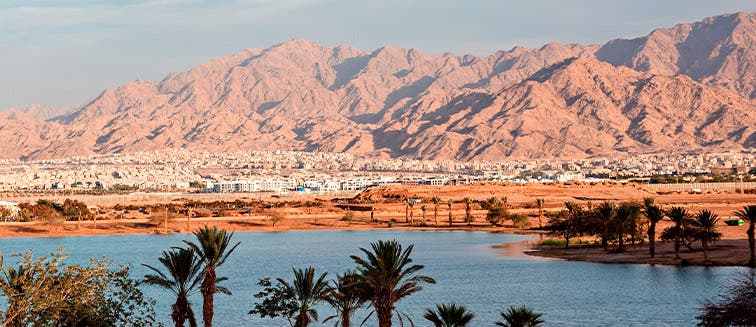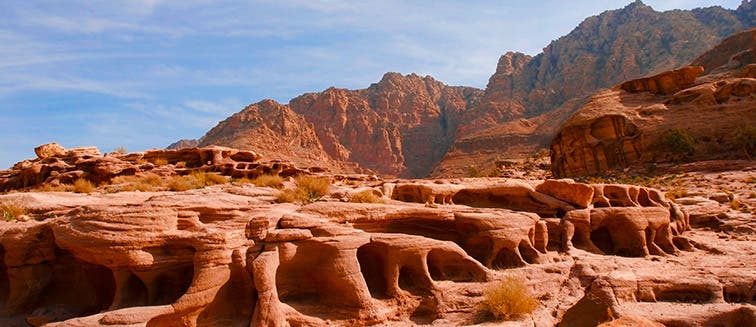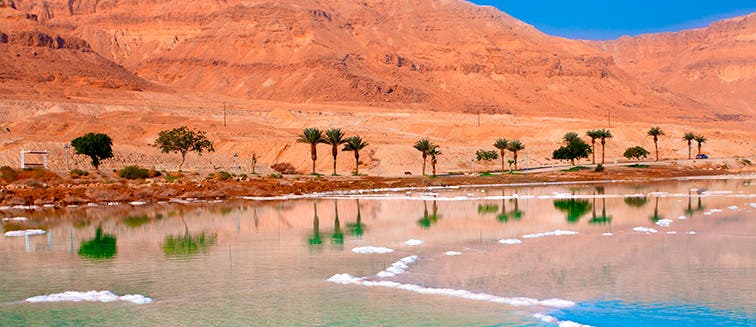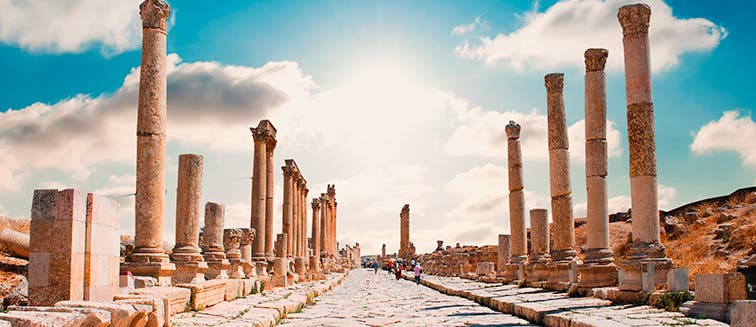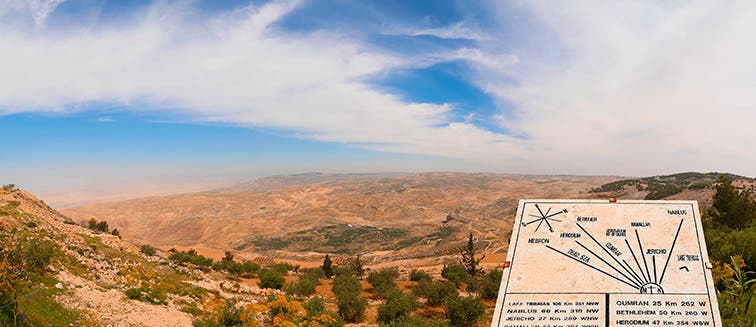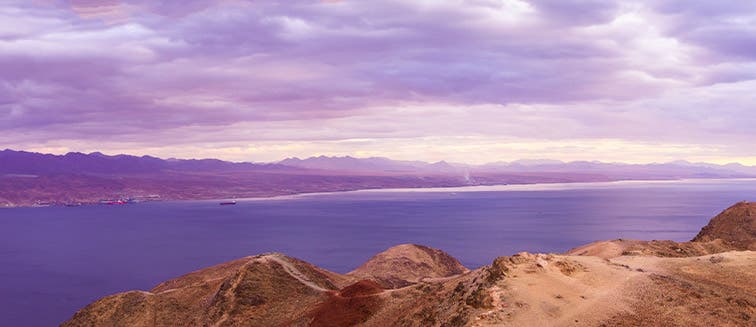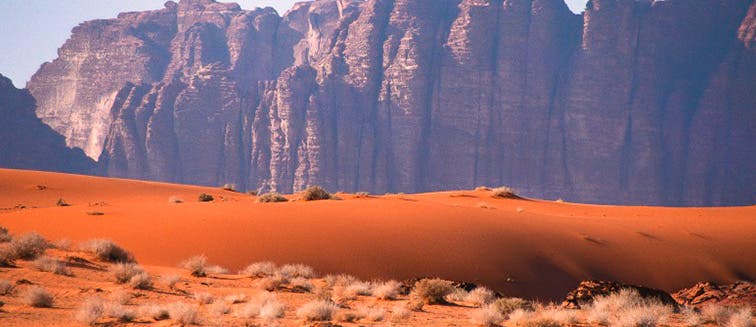Africa
Americas
Asia
Europe
Oceania
By Season
By Interest
By Group
What to see in Jordan
Petra
Tourist attractions Petra
The ‘Rose City’ of Petra evokes awe and wonder. The rock-hewn temples, caves and tombs reveal the secrets of the lost civilisation of the Nabatean and the site is well situated between the Jordanian capital of Amman and the Red Sea resort of Aqaba. Intricately carved into soft pink sandstone cliffs on the rocky plains of Western Jordan, a trip to Petra is the chance to come face-to-face with the most famous archaeological relics in the world, making it a favourite bucket-list destination of all intrepid travellers.
The Nabatean capital, Petra was once a major trading hub and the complexity of its structures attest to the large population of around 20,000 inhabitants who are thought to have lived there during the civilisations Golden Age. After falling to the Romans, Petra slowly fell into decline. It was rediscovered by a Swiss explorer in 1812 and has enchanted visitors with its romantic facades and dramatic cave structures ever since. Today, a tour of Jordan is incomplete without contemplating the majesty of the Treasury, the postcard image of Petra, or climbing to the Altar of Sacrifice viewpoint, from where you can appreciate the full scale of the site. If you can arrange to visit Petra early in the morning or after dark, you’ll be greatly rewarded as the ruins fall quiet. In the evening, the Treasury is lit with the glow of thousands of candles, a spectacle that surpasses all expectations. There’s few places in the world as magical as Petra.
What to see at Petra
As the entire site stretches out across more than 100 square miles, don’t expect to see all of the sights at Petra in one day. To get to the main site, visitors on a tour of Petra must pass through the narrow path of the al-Siq gorge, which leads to Petra’s most recognisable facade, the Treasury. Also known as ‘Al-Khazneh’, this elaborate temple believed to have been the mausoleum of the Nabatean King in the 1st-century, famously features in the movie Indiana Jones and the Last Crusade.
The most popular thing to see at Petra, the awe-inspiring rock-hewn facade of the Treasury is beyond Insta-worthy! Another highlight of a trip to Petra is the Nabatean Theatre, the remains of an ancient amphitheatre, built during the Golden Age of Petra, between 9 BC and 40 AD, to hold a huge capacity of 8,500 spectators. Even more impressive is the fact that a large part of the theatre was completed carved out of solid rock! One of the younger parts of the complex is the Byzantine Church, home to lavish Byzantine mosaics depicting mythological animals, and personifications of the seasons, the ocean, the earth and wisdom. Built around 450 AD, the Byzantine Church has proved an invaluable insight into everyday life in Petra during this period as in 1993, 152 papyrus scrolls were discovered in one of the churches rooms, dating from the 6th-century.
As well as exploring the site’s temples and churches, a trip to Petra should also include a visit to the ancient city’s tombs, the most impressive of which is the Royal Tombs, nestled in the western cliffs of Jebel Al Khutba. This is Petra’s most extraordinary burial site, reached by climbing a steep flight of stairs. The climb is worth it to discover this lesser-known section of Petra, where the great and powerful Nabatean kings were laid to rest.
Finally, the Obelisk Tomb, located on the road to the main entrance of Petra, gives visitors a taste of things to come with its extraordinary rock-hewn tombs, topped with obelisks dedicated to the people buried there. It’s though to have been the final resting place of Nabatean nobility and, come sunset, the pink sandstone casts beautiful, obelisk-shaped silhouettes across the entrance.
OUR BEST TRIPS TO PETRA
YOU ALSO LIKE
Armenia
Notify me when available
Bahrain
1 Trips
Israel
Notify me when available
Jordan
9 Trips
Kazakhstan
1 Trips
Kyrgyzstan
Notify me when available
Lebanon
Notify me when available
Oman
Notify me when available
Qatar
4 Trips
Turkey
8 Trips
Uzbekistan
2 Trips
Cambodia
4 Trips
Thailand
6 Trips
Vietnam
7 Trips
Myanmar
Notify me when available
Indonesia
8 Trips
Malaysia
3 Trips
Philippines
2 Trips
Singapore
2 Trips
Laos
Notify me when available
India
13 Trips
Bhutan
2 Trips
Nepal
5 Trips
Sri Lanka
5 Trips
Maldives
6 Trips
United Arab Emirates
4 Trips
Saudi Arabia
2 Trips
China
3 Trips
Japan
8 Trips
Hong Kong
Notify me when available
South Korea
5 Trips
Tibet
Notify me when available
Mongolia
Notify me when available
Taiwan
Notify me when available
Tourist attractions jordan
Points of interests
- Trips to Ajloun Castle
- Trips to Amman
- Trips to Aqaba
- Trips to Dana Nature Reserve
- Trips to Dead Sea
- Trips to Jerash
- Trips to Little Petra
- Trips to Mount Nebo
- Trips to Petra
- Trips to Red Sea
- Trips to Wadi Rum
Other Points of interests
- Trips to Almaty
- Trips to Ankara
- Trips to Antalya
- Trips to Beirut
- Trips to Beit She'an
- Trips to Bishkek
- Trips to Bodrum
- Trips to Bukhara
- Trips to Caesarea
- Trips to Çanakkale
- Trips to Capernaum
- Trips to Cappadocia
- Trips to Dead Sea
- Trips to Ephesus
- Trips to Galilee
- Trips to Garni
- Trips to Haifa
- Trips to Istanbul
- Trips to Izmir
- Trips to Jericho
- Trips to Jerusalem
- Trips to Karakol
- Trips to Katara Cultural Village
- Trips to Kaymakli Underground City
- Trips to Khiva
- Trips to Khor-Virap
- Trips to Konya
- Trips to Kusadasi
- Trips to Lake Sevan
- Trips to Muscat
- Trips to Nizwa
- Trips to Noravank
- Trips to Nur-Sultan
- Trips to Pamukkale
- Trips to Pasargada
- Trips to Persepolis
- Trips to Ras al Hadd
- Trips to Safed
- Trips to Samarkand
- Trips to Shiraz
- Trips to Souq Waqif
- Trips to Tashkent
- Trips to Tehran
- Trips to Tel Aviv
- Trips to Temple Mount
- Trips to The Corniche
- Trips to The Pearl-Qatar
- Trips to Troy
- Trips to Vagharshapat
- Trips to Wahiba Sands
- Trips to West Bay
- Trips to Yadz
- Trips to Yerevan
Countries Nearby
- Armenia Trips
- Bahrain Trips
- Bhutan Trips
- Cambodia Trips
- China Trips
- Hong Kong Trips
- India Trips
- Indonesia Trips
- Israel Trips
- Japan Trips
- Jordan Trips
- Kazakhstan Trips
- Kyrgyzstan Trips
- Laos Trips
- Lebanon Trips
- Malaysia Trips
- Maldives Trips
- Mongolia Trips
- Myanmar Trips
- Nepal Trips
- Oman Trips
- Philippines Trips
- Qatar Trips
- Saudi Arabia Trips
- Singapore Trips
- South Korea Trips
- Sri Lanka Trips
- Taiwan Trips
- Thailand Trips
- Tibet Trips
- Turkey Trips
- United Arab Emirates Trips
- Uzbekistan Trips
- Vietnam Trips
Trip Styles
- Indian Subcontinent Tours for Couples Trips
- Indian Subcontinent Nature Tours Trips
- Adventure in India's Natural Beauty Trips
- Indian Ocean Nature Holidays Trips
- India Couples Tours - Exoticca Trips
- Family India Trips
- Indonesia Nature Travel Packages Trips
- Family Japan Trips
- Romantic Getaways with Exoticca Trips
- Nepal Nature Holiday Packages Trips
- Philippines Nature Tours Trips
- Family Thailand Trips
- Thailand Nature Holiday Packages Trips
- Turkey Tours for Couples Trips
- Vietnam Nature Holiday Packages Trips
Subscribe to our newsletter and join Exoticca GO
The best travel deals
Exclusive promotions
Expert travel tips
